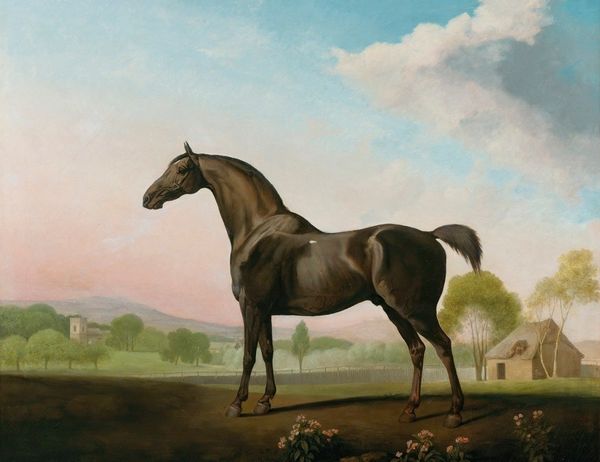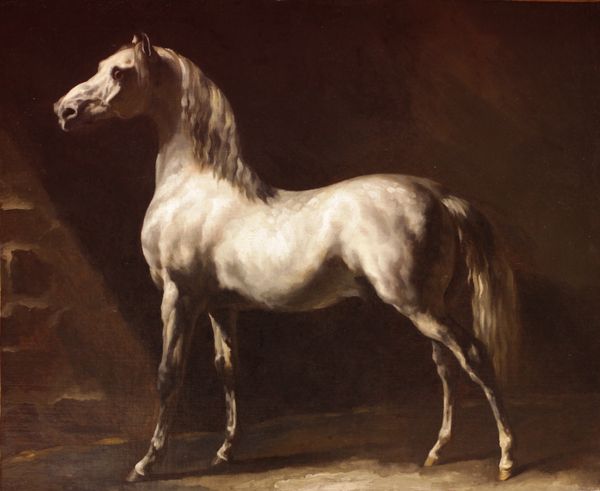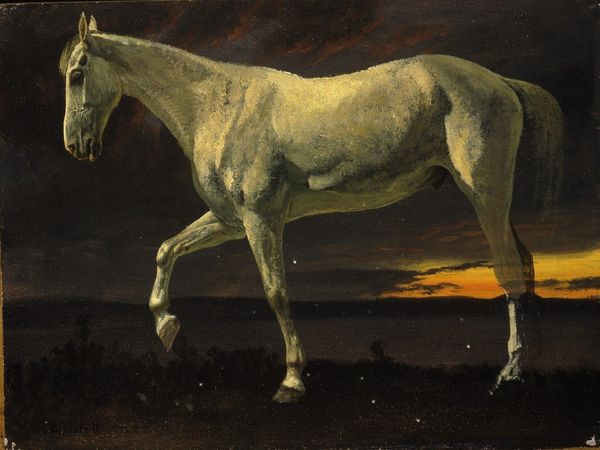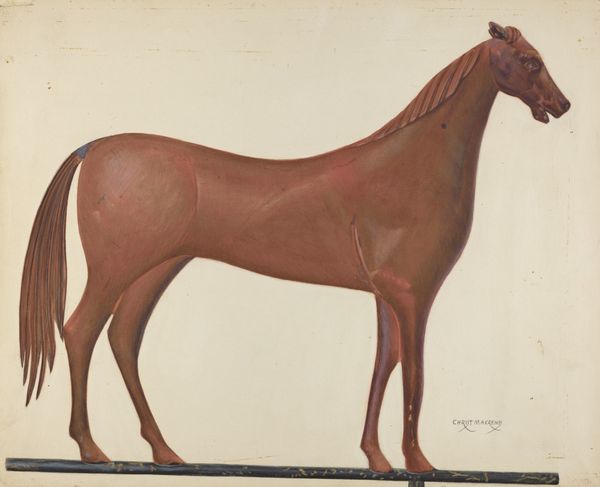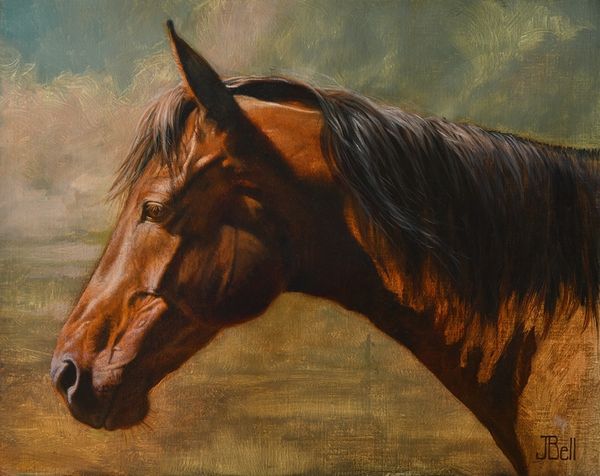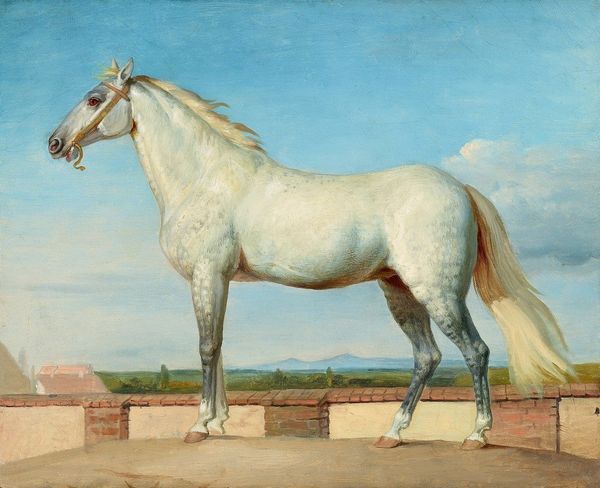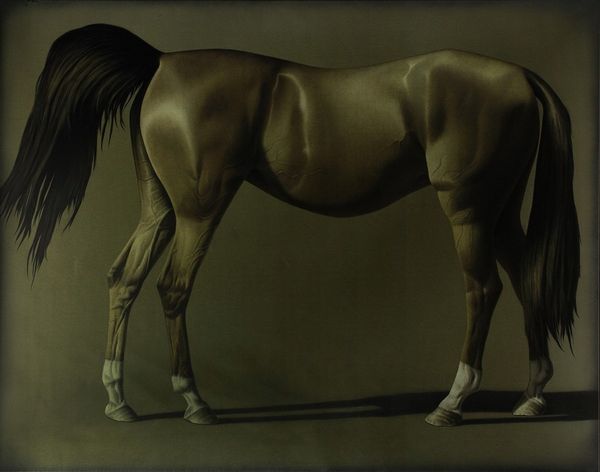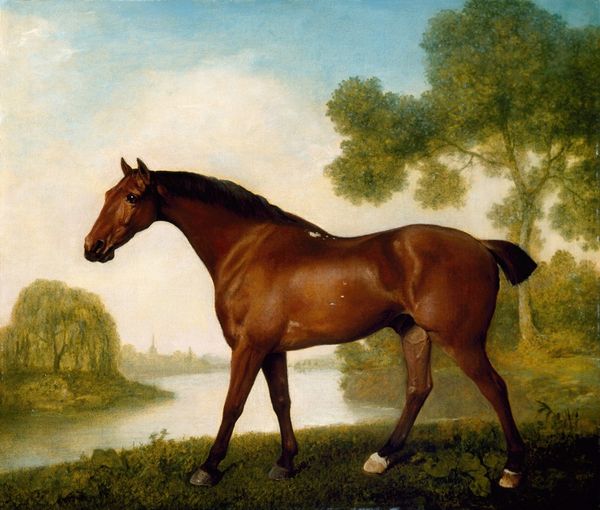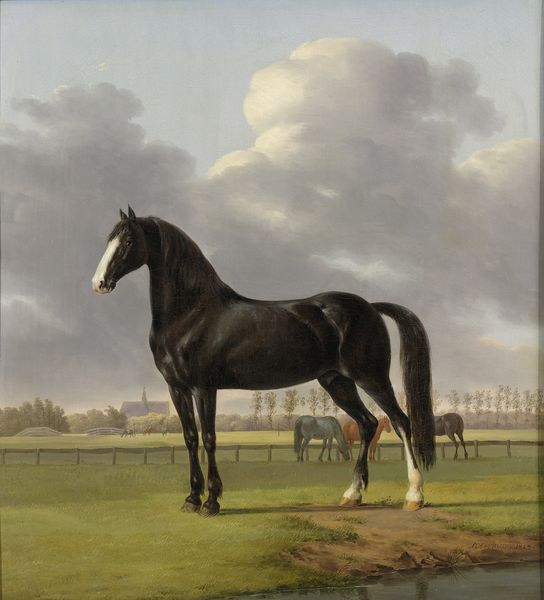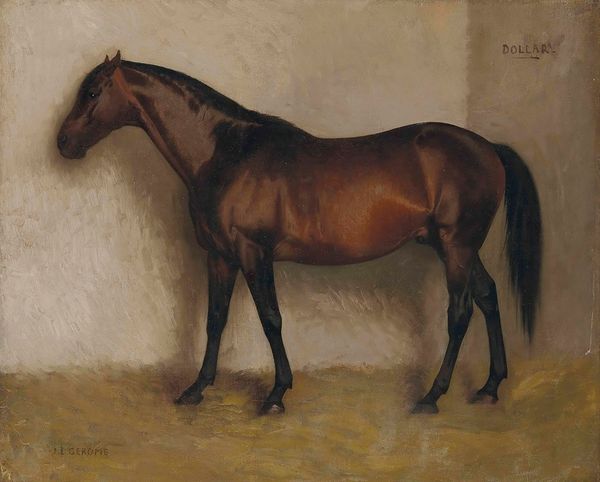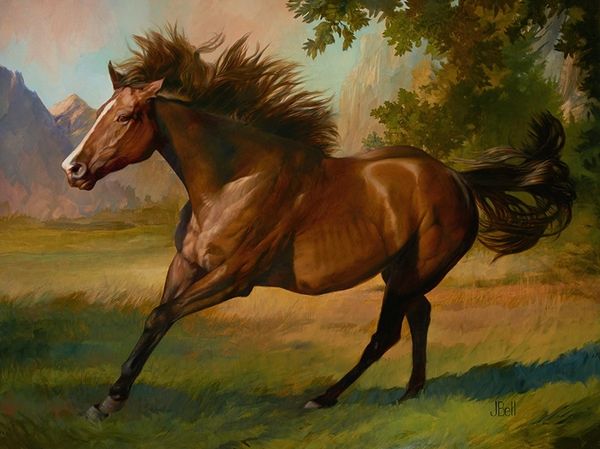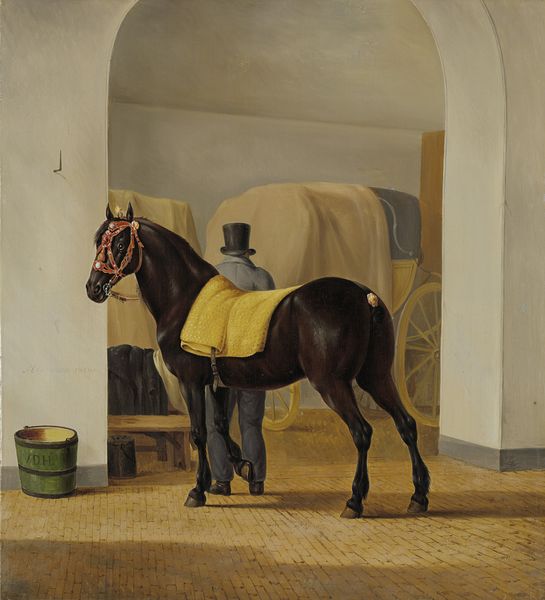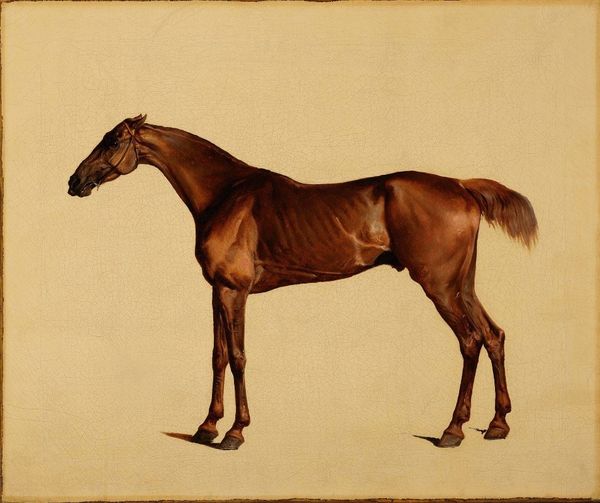
Dimensions: 325 x 259 cm
Copyright: Public domain
What can a seemingly simple image of a horse tell us about eighteenth-century Britain? 🐴 The self-taught artist George Stubbs (1724-1806) created ‘Whistlejacket’ around 1762. The painting depicts the iconic thoroughbred racehorse Whistlejacket, reared on his hind legs in an impressive pose. The piece was commissioned by Whistlejacket’s owner, the Marquess of Rockingham, as a testament to his sporting victories and the celebrity status of the horse. Rockingham, one of the wealthiest men in the country, paid 60 guineas for the completed canvas. 🐎 Unlike the most celebrated artists of his day, Stubbs was not educated in the Academies. His lack of classical training does not, however, result in a clumsy image. Stubbs unofficially studied human anatomy at York County Hospital, where he completed portraits. This study allowed for a striking accuracy and realism. His careful attention to detail was quickly recognised, leading to prestigious commissions – including by the Duke of Richmond. 💸 The anatomical detail of ‘Whistlejacket’ is skilful. Zoom in to see the veins and muscles across the horse’s body. When coupled with the huge, life-size scale of the painting, the effect is striking. The horse appears almost alive. 🏇 What else strikes you about this painting? The flat background is untraditional for the eighteenth century. In fact, several publications from the 1760s proposed that this portrait was incomplete! When compared to the high level of detail on Whistlejacket’s skin, the plain background builds a powerful sense of focus. What do you make of the plain background? 🖼️ The lack of a rider in this painting might speak to the strength and independence of the natural world. This idea embodies Romanticism, a late eighteenth century movement which aimed to capture the emotional grandeur of nature. 🌲 A monument to artistic realism, ‘Whistlejacket’ is one of the most famous pieces in the National Gallery. After all, at almost three metres, it’s pretty hard to miss! 📏 Editor: Lucy Jude Grantham
Comments
No comments
Be the first to comment and join the conversation on the ultimate creative platform.
